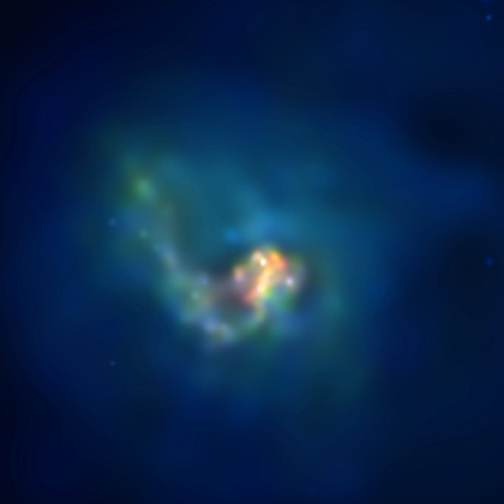
 Credit: NASA/IoA/J.Sanders & A.Fabian
Credit: NASA/IoA/J.Sanders & A.Fabian
Plume in Centaurus
Clusters of galaxies are among the largest structures in the Universe. In
optical light they appear as a tight grouping of individual galaxies. In
X-rays, the picture is entirely different: the glow from the individual
galaxies is lost and the emission is dominated by huge, hot clouds of gas
which exists between the galaxies. Measurement of this X-ray producing gas
provides astronomers a way to measure the total mass of the cluster
galaxies, since the hot gas would expand rapidly away from the cluster if
it were not for the gravitational attraction produced by the matter in the
galaxies. In addition measurement of the chemical makeup of the X-ray
emitting gas helps astronomers understand how the hot gas came to be in the
first place. The Chandra X-ray
observatory has provided
some of the best images of galaxy cluster emission. A new observation of
the Centaurus cluster (shown above) by Chandra shows unexpected detail
- a large plume of material stretching nearly 70,000 lightyears and
containing more material than 1 billion suns. The origin of this plume is
not certain - it may be material cooling and falling onto the center of the
cluster, or it may be gas stripped off of cluster members by galaxy
interactions.
Last Week *
HEA Dictionary * Archive
* Search HEAPOW
* Education
Each week the HEASARC
brings you new, exciting and beautiful images from X-ray and Gamma ray
astronomy. Check back each week and be sure to check out the HEAPOW archive!
Page Author: Dr. Michael F.
Corcoran
Last modified February 4, 2002


